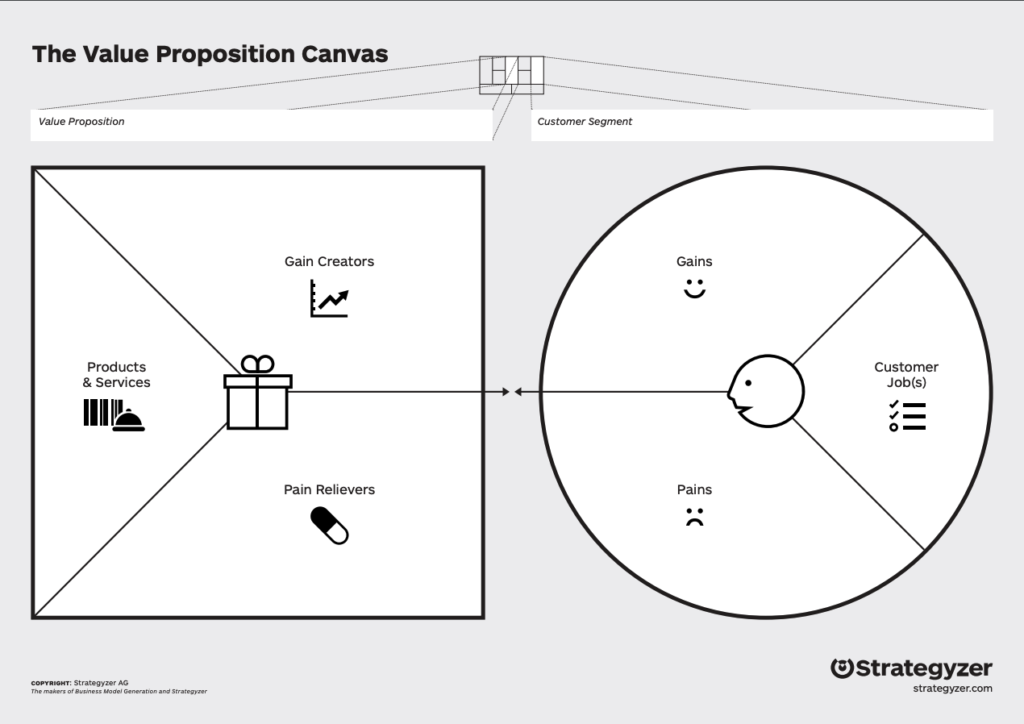From product research to the marketing mix, each step needs to be effective and flexible to meet the organization’s goals and product’s vision. Here we will walk you through all the stages of product strategy that will help you build the optimally suitable product as per the target audience’s requirement.
Identify the consumer and competitors
You fired a product into the market but could not find some response from the end-user. Have you ever thought about why you failed? That’s why you had you had missed the most effective step of your product strategy before you launched it.
The consumer is the most important entity of your product life cycle. You should identify the industry where you are going to pitch your product and the market size. You should figure out the data about what experiences they expect from the kind of product you are going to launch and create a segmentation of your target.
According to the nature of the product, your research method can be different from others. Most of the companies conduct online research where they pitch the actual audience. The data collected from that research is much helpful in developing a great product strategy.
Analyze competitor’s strengths, weaknesses, and market trends to distinguish yourself with a competitive advantage and a product or service value proposition. Have a look at the Strategyzer’s Value Proposition Canvas from Alex Osterwalder & Yves Pigneur.

Deeply understand the problem
After the consumer identification research, you would have collected a lot of data in terms of your product design and the consumer’s expected needs, which are associated with that product.
As a team, you are expected to understand the level of problems clearly. Before you enter the product design and development, the design and development team must have a thorough understanding of the product based on the pains of the consumer and determine the potentials risks of failure. Quantitative and qualitative UX methodologies are rich in teaching.
Make a vision
Both the product strategy and product vision are different things. Don’t confuse these two terms with each other. Product strategy is known as the steps included in the project lifecycle from initiation to end. While product vision is the number of goals achieved after the product is fully developed.
The product vision should be very inspiring for the team with the maximum satisfaction of the end consumer as a core target. With time, the project manager tracks the deadlines and achievements as per the goals in the product vision. The project managers gauge it by mapping it on the initial research data, either it caters to all the needs of the end consumer.
Before entering the development stage, you can gauge a digital product’s satisfaction level with the product user experience design. Once the product is designed, it gives you a complete understanding of the operations that it is going to fulfill. To validate your product or your new idea, you can also use pretotyping methodology as recommended by Alberto Savoia.
Fix objectives and value-driven metrics
To define the success of your product and business goals, you have to state the quantifiable hypothesis and choose the right KPIs.
Depending of your market and your product, choose and measure relevant indicators and mains product’s KPIs like :
- Customer Lifetime Value (LTV)
- Customer Acquisition Cost (CAC)
- Customer Conversion Rate.
- Average Revenue Per User (ARPU)
- Churn Rate.
- Monthly Recurring Revenue (MRR)
- Bounce Rate.
Define UX design principles
The user experience is the most effective and useful thing that defines the success of your product. You should research the industry best practices if you wish to launch a digital product. Among the best UI practices, the possible cross-channel functionality of the product is appreciated by the users. But, the cross-channel functionality should be coherent with the application theme.
For instance, a digital banking application should look into the needs of the consumers and show a product that is relevant to him/her. A game application should have a button to share a story on social media. In short, the design team should be well-instructed behind the theme of the product.
Collaboration among the teams
From the audience research to the state of the art application implementation, all of the teams should collaborate to understand the product better. The cross-platform collaboration will help all the teams outperform when the product’s lifecycle reaches that particular team’s performance.
For instance, the marketing team already has a thorough understanding of the product. They would have completed their homework on the target audience and strategy on how to target that audience.

Keep the focus on the goals/achievements
It is necessary to keep the focus on the product strategy. The project manager is mean to keep all the teams coherent with the goals. Diversion from the target will not be in favor of the product’s popularity in the long run.
Most of the design teams go out of context while drafting the UX designs by introducing new features. While the added features are not among the demands demand of the audience. Now, the over efficiency could be a significant threat to the popularity of the product as you have diverted from the needs of the people, which was the first step of your UX strategy.
Execute the Strategy
It is high time to execute the built strategy according to the dealt time-frame in all the steps.
Once all the steps are optimized with the needs of the users and strategic goals accordingly, the best product comes into existence. In the long run of product development, share results and improvement needs with the teams. Try to keep the stakeholders focus on the target, the user, and on product roadmap and backlog. If not, most often, there comes the point when there is a need to change the strategy; it is among the best practices to reengage with all the stakeholders of the product.
Following these steps, you have a global recipe to meet a successful product. These are the steps that the giant players even execute in their product lifecycle to achieve the optimum results.
